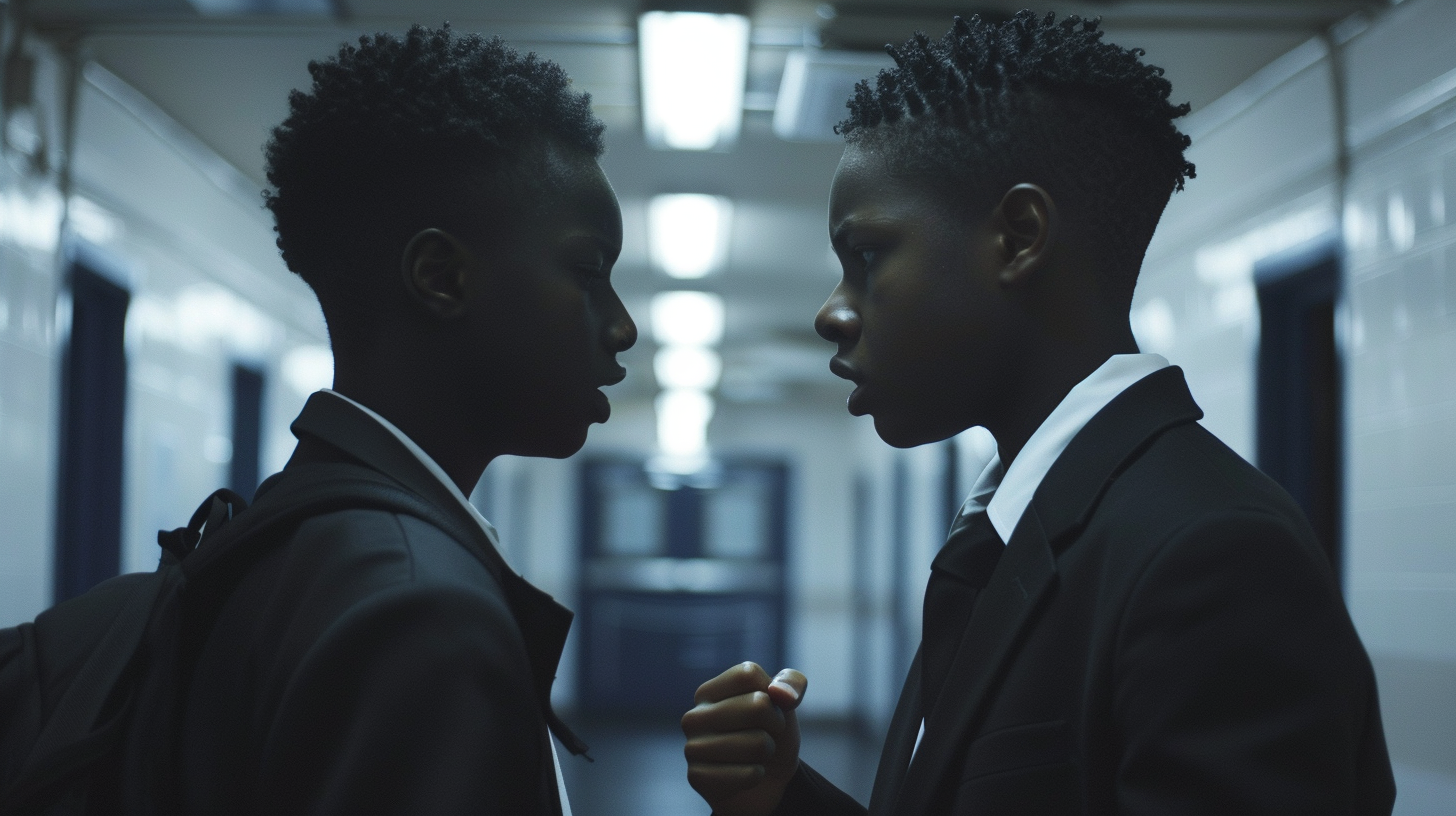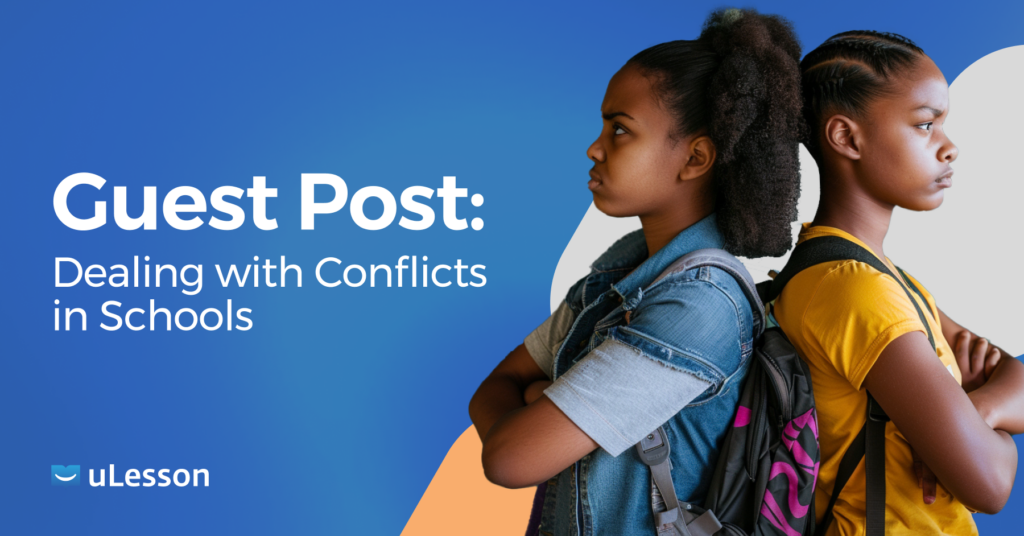Conflict is a natural part of human interaction, and nowhere is this more evident than in the dynamic environment of a school. As a dedicated teacher, I understand that navigating the various sources of conflict within the school environment can be a significant challenge. However, by adopting effective strategies, we can create a more harmonious and productive learning community for students, their families, and fellow educators.
Here’s a practical guide to help teachers understand and navigate the different types of conflicts in schools.
Common Sources of Conflict in Schools
Student-Teacher Conflicts
Issues such as differences in expectations, communication breakdowns, or disciplinary matters can create friction between students and teachers.
As a computer science teacher, I’m known for being strict and demanding during practical sessions. One of my students struggled in my class last term. During independent work, I noticed the student whispering to a classmate. I warned them to stop and focus. Soon after, I saw them whispering again. I told them this was the second time, so they would be punished.
The student immediately got upset, arguing it was unfair since they were just asking a question briefly. I explained my policy—no talking was allowed during work time, and disobedience means sanction. This led to an argument, with both of us feeling justified. The conflict created tension between us for the rest of the term.
In retrospect, better communication and compromise could have helped. Discussing clearer expectations may have prevented the conflict.
Student-Student Conflicts
Conflict among students can arise from bullying, peer pressure, clashes in personalities or interests, and complex social dynamics. For instance, disagreements over group work in class may escalate into personal disputes between students.

During a group project in my class, I noticed tension growing between two students, Bridget and Aisha. Bridget kept criticising Aisha’s ideas, while Aisha became increasingly defensive.
The disagreement escalated, and I had to intervene. Despite my efforts, the conflict persisted, and I could sense the awkwardness between both students for the rest of the class. It disrupted their ability to collaborate effectively on the project.
Parent-Teacher Conflicts
Disagreements over student performance, school policies, communication styles, or educational approaches can strain the relationship between parents and teachers.
Last term, I encountered a conflict with a parent, Mrs. O, whose son was struggling in my data processing practical class. At the PTA meeting, Mrs. O expressed her frustration, arguing that my grading standards were too high and I wasn’t providing enough support. I acknowledged her perspective and explained that the course aligned with the curriculum, but her son needed more guidance.
After suggesting remedial practical and after-school tutoring to identify challenges and help her son improve, Mrs. O agreed. By term-end, he had made significant improvements and met the requirements. Now, Mrs. O and I maintain a constructive relationship.
Staff Conflicts
Differences in teaching styles, workload distribution, personal values, or approaches to collaboration can lead to conflicts among teachers and other school staff. Disagreements over curriculum implementation strategies may arise between subject department heads.
I recently experienced a conflict with my department head over implementing a new STEM co-curriculum. I preferred a hands-on, project-based approach, while the department head wanted a traditional lecture format. This led to disagreements during curriculum planning. The tension escalated, disrupting the smooth rollout of the new curriculum across the school.
We eventually had an open discussion to understand each other’s perspectives better. We were able to resolve the conflict and work together more productively.

Conflicts Arising from Administrative Decisions
Decisions related to resource allocation, curriculum changes, or school policies can generate conflict among stakeholders. For example, a decision to implement a new student information system might provoke resistance from teachers who prefer the old system, leading to tensions within the staff.
I’ve also seen this firsthand. The administration had to intervene to facilitate discussions and find a compromise. The experience highlighted the importance of involving teachers in major administrative decisions impacting their work.
Strategies to Address Conflicts in Schools
Improve Communication
As educators, we must prioritise open and respectful dialogue, actively listen to understand different perspectives, and work together to identify underlying issues and find common ground.
Establish Clear Policies and Procedures
Developing and communicating comprehensive school policies on behaviour, discipline, conflict resolution, and communication can set clear expectations for everyone involved and provide a framework for addressing conflicts in schools.

Promote a Positive School Culture
Cultivating an environment that values teamwork, empathy, respect, and inclusivity is essential for schools. By encouraging positive interactions, celebrating diversity, and modelling constructive conflict resolution, we can foster a more harmonious school community.
Provide Conflict Resolution Training
Offering professional development opportunities for teachers, staff, and administrators to learn effective conflict management techniques, such as active listening, mediation, and negotiation, can equip us with the necessary skills to address conflicts productively.
This approach helped in my encounter with Mrs. O. Addressing concerns directly and finding a mutually agreeable solution strengthened our parent-teacher partnership.
Involve All Stakeholders
Engaging students, parents, teachers, staff, and administrators in the process of addressing conflicts and encouraging collaboration can lead to shared ownership and more sustainable solutions.
Use Mediation or Conflict Resolution Programmes
In situations where conflicts escalate or require additional support, implementing mediation programmes or seeking the assistance of trained conflict resolution professionals can provide valuable guidance and resources.

By proactively addressing conflicts in schools and fostering a culture of open communication and collaboration, we can create a more harmonious and supportive environment where all members of the school community feel valued and heard.



